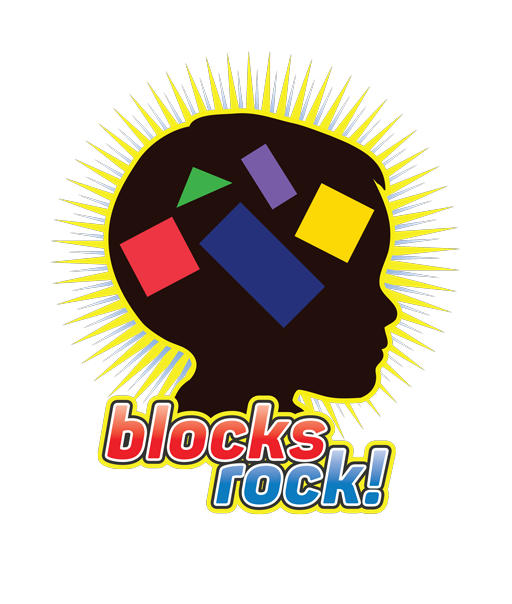STEM Career Spotlight
STEM Career Inspiration for Kids: Marine Biologist
Learn more about what a marine biologist is and what they do, the steps to become a marine biologist, and fun marine-related activities for kids!
At Blocks Rock!, we’re continuing our series highlighting awesome STEM careers that inspire kids! For our sixth spotlight, we’re highlighting marine biologists.
Read this article to learn more about what a marine biologist is and what they do, the steps to become a marine biologist, and fun activities for kids! Read to the end to find our printable STEM poster, perfect for a child’s bedroom wall or a classroom.

What is a Marine Biologist?
Marine biologists study the ocean and all of the different types of plants and animals within it! This includes a variety of animals like whales, fish, turtles, seals, or sharks, and underwater plants like coral, algae, or seaweed.
The ocean is a big place and there’s still a lot for marine biologists to learn about how it works! As Scienceexplorers.com says, “The oceans of our planet make up a massive area, about 6.5 times bigger than all the land that’s on it! There is a lot we don’t understand about the ocean, and much of it remains unexplored.”
Sometimes, marine biologists study the ocean’s life forms to better understand the habitat of the ocean life and how we can help preserve it, and other times, it may be to better understand uncharted territories or new underwater species we’ve never seen before.

Marine Biologist Job Duties
Because the ocean is such a big place, different types of marine biologists study different things. Before you know what your job duties would be, you’d have to know what kind of marine biology you’d like to specialize in.
Here are a few examples of different types of marine biologists:
Phycology: the study of algae
Ichthyology: the study of fish and their habitats
Invertebrate zoology: the study of animals without a backbone
Marine mammalogy: the study of marine mammals (such as whales, dolphins, seals, or sea lions)
Fishery biology: the study of the interaction between fish populations, the environment, and humans
Marine biotechnology: the creation of products and processes from marine organisms
Marine microbiology: the study of marine microorganisms (very small life that lives in marine environments such as bacteria)
Marine ecology: the study of living things in the ocean and how they interact with their environment
Daily Job Duties
While your specific job duties will look different depending on which specialization you choose, here are some duties you would most likely have (taken from a job description on Indeed.com):
“Develop and conduct research on the relationships of organisms in the marine environment.
Study characteristics of animals in the ocean like their species interaction, diseases, movement patterns, etc.
Analyze the effect of human activity on marine ecosystems.
Collect biological data and specimens to analyze.
Monitor and manage wildlife populations and invasive plants and animals.
Write research papers and articles explaining their findings.
Develop conservation plans and recommendations to policymakers and the public.”

How to Become a Marine Biologist
To become a marine biologist, you’ll want to make sure you develop a love and understanding of science, and get a bachelor’s degree in biology or marine biology. Ultimately, the more experience you have early on, the more prepared you’ll be for your dream marine biology job!
Here are some of the steps you can take to make that happen:
Work hard in school and take as many science courses as you can.
Get involved in science-based recreational activities! Joining a club, volunteering at a zoo or aquarium, or job shadowing are great options.
Choose and attend a college that offers a great biology or marine biology Bachelor’s Degree program.
Search for relevant internships or part-time jobs in your desired marine specialization.
If your Bachelor’s degree was in a broad area of biology, you can attend a graduate school to specialize in your desired marine science field.
Search and apply for your dream job in marine biology!
Marine biologists can work for a number of different places, but here are a few options:
State or federal government agencies
Research labs
Consulting firms
Aquariums
Zoos
Museums
Colleges/Universities
High schools
Learn more about the path to becoming a marine biologist at environmentalscience.org.

Fun Activities for Interested Marine Biologists
So what can a parent do for a young, future marine biologist? We’ve put together a list of fun activities that encourage a love of research, science, and ocean life that also help build skills that are critical for a future in STEM learning!
Explore Marine Biology Online - Seek out educational websites and blogs to learn more about the basics of marine biology. We think scienceexplorers.com is a great resource!
Dissect a Fish or Conduct Another Marine-Related Science Experiment - if your child is interested in the biology of fish and marine life, get a kit to do a home science experiment, like dissecting a fish.
Read Books About Marine Animals - Reading more about marine life and its anatomy is a great way to get involved! This book, Atlas of Ocean Adventures, is a great way to learn more about marine animals!
Play Blocks Rock! - Since Blocks Rock! builds spatial reasoning, a skill critical for STEM learning, it’s the perfect game to help develop a solid STEM base!
Visit Zoos and Aquariums - A great way to spark interest in marine life is to see it up close and in person! Find a local zoo or aquarium and speak with the local marine biologists who work there.
Experience Life Underwater - If you’re located near an ocean or large body of water, try signing up for scuba diving lessons, whale watching sessions, or anything that involves learning about life underwater!

Get inspired with our marine biologist printable!
This one-page printable is a fun summary of this blog post and has a checklist of the activities for young marine biologists. Download it here.
As always, if you’re looking to build skills critical for STEM careers, remember to play Blocks Rock!
If you want to explore other STEM careers, check out these ideas from our blog:


